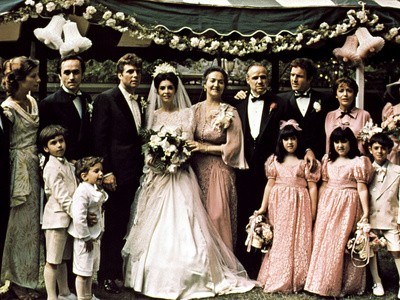|
|
| Note asymmetrical flutes of highly modified parachute so kiting occurs. (Photo credit: Wikipedia) |
Asymmetrical Meters
"Many composers of today are using meters that are
asymmetrical. This occurs in music when you have an
odd number of subdivisions, which means that the measure cannot be divided into equal pulses or
beats. There have been a number of different methods used for notating asymmetrical meters; the more traditional method of notating these time signatures is commonly preferred like (5/8 and 7/8).
Making asymmetrical meters easy to recognize is the top number of the time signature. In many cases it is an odd number, for example (5/8 and 7/8). Asymmetrical meters can be counted in the same manner as compound meters. In order to determine the best possible group pattern, young musicians must pay careful attention tot he beams provided above or below the notes. Where possible, each beat is divided into three-note groupings. One beat or pulse will have one less
eighth-note, thus making the meter asymmetrical.
Many musicians overlook the effect that meter changes will have on the conductor. Conductors use different conducting patterns to successfully conduct many different meters. The conductor's pattern should emphasize a strong downbeat. This may aid many young musicians in keeping their place in the music. Watching the conductor is extremely important when dealing with asymmetrical meters.
Another compositional method used in many of today's concert band music is the alternation between simple, duple, triple, quadruple and asymmetrical meters. Many young musicians of various experience levels frequently play these rhythms incorrectly because they don't realize that they're only rearranging the eighth-notes to create a different pulse or beat. In return the asymmetrical meters are often rushed, especially the beat or pulse with the fewest notes. For example, if the grouping of an asymmetrical measure (3+2), the last count with only two notes would usually be rushed, as well as any following simple, duple, triple or quadruple metered measure.
Young musicians will see that the second beat or pulse has one less note than the first beat or pulse and will automatically assume that there must be a need to compensate for the missing note by speeding up the
note value of the first pulse or beat. Remember, the eighth-note must stay constant.
The table below illustrates the most-used asymmetrical meters.
Asymmetrical Meters
Meter Beats/Pulses Time Signature
5/8 is considered Asymmetrical
Duple, because it contains one compound pulse.
(1&a), and one simple pulse (1&), or vice-versa; (3+2) or (2+3)
Asymmetrical Duple (3+2) (1&a)(2&) 5/8
Asymmetrical Duple (2+3) (1&)(2&a) 5/8
7/8 is considered asymmetrical
Triple, because it contains two simple pulses (1&) and one compound pulse (1&a), such as (2+2+3+), (2+3+2), or (3+2+2).
Asymmetrical Triple (2+2+3) (1&)(2&)(3&a) 7/8
or (2+3+2) (1&)(2&a)(3&) 7/8
or (3+2+2) (1&a)(2&)(3&) 7/8
11/8 is considered Asymmetrical Quadruple, because it contains one simple pulses (1&) and three compound pulses (1&a), such as (2+3+3+3), (3+2+3+3), (3+3+2+3) or (3+3+3+2)
Asymmetrical Quadruple (2+3+3+3) (1&)(2&a)(3&a)(4&a) 11/8
or (3+2+3+3) (1&a)(2&)(3&a)(4&a) 11/8
or (3+3+2+3) (1&a)(2&a)(3&a)(4&a) 11/8
or (3+3+3+2) (1&a)(2&a)(3&a)(4&a) 11/8
*** In the examples above, the numbers in (1&)(1&a) can be replaced with any number that will best demonstrate the correct counting of the measure in question.
Points to Remember
1. Thoroughly explain all meters:
simple, duple, triple, quadruple, and asymmetrical.
2. If possible, have the children listen to the composition and clap only the strong beats: 1-2, or 1-2-3, or 1-2-3-4.
3. ask them to identify the meter of the song, based on their clapping or counting.
4. Duple and quadruple meters may cause some confusion within the group. Don't be alarmed. Sometimes young musicians will have trouble distinguishing between the two meters. Locating the strongest beats in each measure may resolve the problem.
5. If you have the ability, use new compositions when dealing with compound and asymmetrical meters.
6. Once they have found the beat, have them to count along with the music; (1&)(2&) or (1&a)(2&a).
7. To check for understanding, ask the following questions:
1. Can they quickly decide which meter is used in the music?
2. Is the meter simple, compound or asymmetrical?
8. When dealing with asymmetrical meters, remember, the eighth-note must stay constant. Young musicians will have a tendency to rush. Select a slow tempo to start this exercise and gradually work your way up to the performance tempo. This method of teaching will ensure that all notes are being played evenly."
Simple Songs in various meters
- "The farmer in the Dell" (duple simple)
- "Five Little Ducks" (duple simple)
- "Joy To The World" (duple simple)
- "Row, Row, Row Your Boat" (duple compound)
- "When Johnny Comes Marching Home: (duple compound)
- "Green Sleeves" (duple compound)
- "Three Blind Mice" (duple compound)
- "Found a Peanut" (triple compound)
- "Take Me Out to the Ballgame" (triple simple)
- "Amazing Grace" (triple simple)
- "Home On The Range" (triple simple)
- "My Bonnie Lies Over the Ocean" (triple simple)
- "Jesus Loves Me" (quadruple simple)
- "The Cat Came Back" (quadruple simple)
- "Do Your Ears Hang Low (quadruple simple)
- "Dry Bones" (quadruple simple)
- "Silent Night" (compound duplex)
- "Humpty Dumpty" (compound duple)
- "The Muffin Man" (quadruple simple)
- "The Alphabet Song (quadruple simple)
- "The Animal Fair" (compound duple)
- "The Ants Go Marching" (compound duple)
- "The Bear Went Over The Mountain" (compound duple)
- "The Eensy Weensy Spider" (compound duple)
- "Pop! Goes the Weasel" (compound duple)
- "Hickory Dickory Dock" (compound quadruple)
Dr. Girtmon is currently director of Bands/Music Education-chair/associate professor of Music at Belhaven College, Jackson, Miss. He oversees all aspects of the Marching, Jazz, Symphonic Winds, and Pep Band programs, as well as the large and small ensembles in the spring terms.
Dr. Girtmon has an active conducting schedule and is a frequent honor band clinician and adjudicator for concert band and large and small ensembles events.
I hope you enjoyed this basic training article on mastering the mysteries of
multi-metered music by Paxton Girtmon.
Improve Your Piano Playing
Access
Free Piano Tutorials Here

"Jazz washes away the dust of every day life."
--
Art Blakey





















